What is Hydraulic Cylinder Rod Hard Chrome Plating?
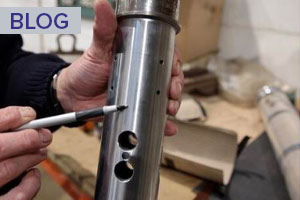 In order for hydraulic systems to run smoothly, it is crucial for the chard chrome plating on a cylinder rod to be perfectly finished to precise specifications. There are a number of steps and factors that come into play during the hard chrome plating process to ensure your hydraulic cylinder performs to the required standards.
In order for hydraulic systems to run smoothly, it is crucial for the chard chrome plating on a cylinder rod to be perfectly finished to precise specifications. There are a number of steps and factors that come into play during the hard chrome plating process to ensure your hydraulic cylinder performs to the required standards.
This blog will detail the step-by-step process of hard chrome plating and give you a deeper understanding to this key cylinder repair step.
The Hard Chrome Plating Process
1. Inspection
The cylinder rod is inspected during the initial evaluation to determine the condition prior to the chroming process. An inspector will make note of any signs of corrosion, pitting, marring, damage, cracking or flaking. The presence of any of these conditions will be taken into account during the re-chroming process.
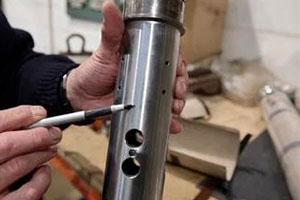
2. Grinding & Stripping
Old material on the cylinder rod must be removed before new chrome can be applied. This step needs to be completed carefully to preserve the steel beneath the old layer and without affecting the rod diameter. This can be done with two methods – electrolytic stripping and stone grinding.
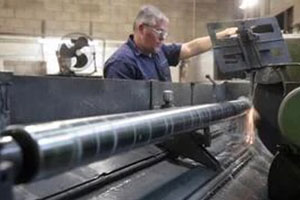
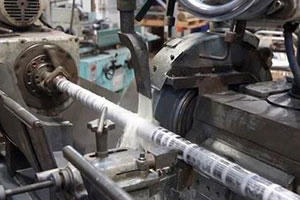
– Electrolytic Stripping: The cylinder rod is placed in a reverse electrolysis tank, essentially the opposite of electrolytic plating. A negative current applied to a chrome solution strips the old chrome off the rod by allowing chrome molecules to separate from the surface.
– Stone Grinding: This method uses large stone grinding wheels to remove old chrome. The rod is rotated at a constant rate on a large lathe-like grinding machine and brought into contact with a spinning stone grinding wheel. The old material is worn away by the friction. This method is highly technical and requires a highly experienced and skilled operator to determine how much pressure to apply to remove the old chrome layer without damaging the steel underneath.
3. Cleaning and Masking
The rod then needs to be prepared to be placed in a bath of chromium solution. Prior to doing so, the rod must be cleaned thoroughly. Undesirable anomalies may occur if debris and contaminants are not properly cleaned during this step. This will lead to conditions such as pitting, pinholes, flaking and peeling of chrome during the cylinder life. The ends of the rods are also masked at this step to ensure the final product has a neat and professional finish.
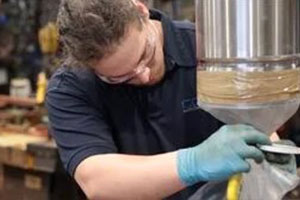
4. Plating
Electrolytic plating is a familiar process, being used in a range of applications spanning from plating gold jewellery to applying metal plating to satellites.
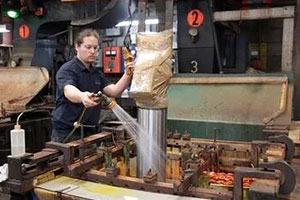
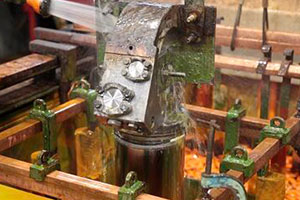
Electrodes are attached to the object and placed in a solution of dissolved metal molecules. A positive current is applied and runs through the solutions and out through the electrodes. The dissolved metal molecules in the solution are then attracted to the metal surface of the cylinder rod. CCA Hardchrome use a special formulation of Chromium in our chroming solution baths.
The rods are placed in this electrolytic solution for a specific amount of time in order to build up the layer of new chrome. This stage is more technical due to the specific requirements for hardness and surface finish quality. The precise current must be delivered steadily whilst the solution chemistry and temperature are regulated at a maintained level during the plating process. Errors or interruptions to power or temperature during this stage will lead to a poor chroming job, and cause cylinder failure not long after repair.
5. Surface Finishing
This is a 2-step process of post-grinding and linishing to finish the rods once a new layer of chrome has been applied. The perfect surface finish is achieved by reducing the chrome coating to the exact thickness, and polished.
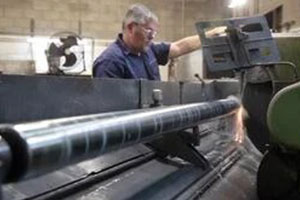
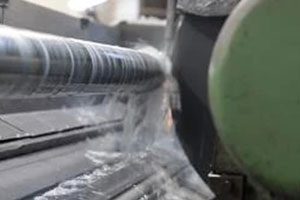
– Post Grinding: The stone grinding technique is once again used in this step to reduce the initial surface thickness closer to required specifications. The post-grind is an even more delicate process as the surface finish is measured in fractions of millimetres and any errors in this process will ruin the chroming.
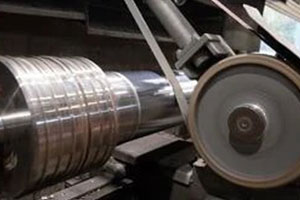
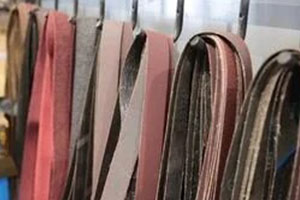
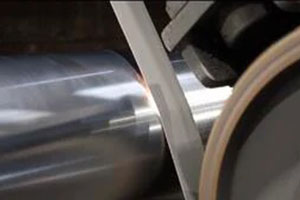
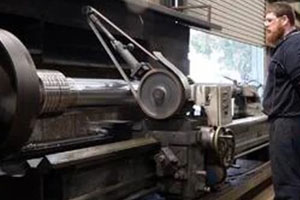
– Linishing: This process consists of sanding the cylinder rod meticulously to the required thickness, whereas surface finishing uses purpose-made sanding machines. The rod is centred on the large linishing machine. This machine spins at a constant rate while linishing belts of varying grades are used to sand the chrome surface to the desired thickness and consistency.
The surface thickness (consistency), roughness and texture are crucial for cylinder performance, making this a very important step in the chroming process.
Increased external contaminants and unacceptable leakage causes cylinder life to be reduced. This may occur if the surface roughness of the rod is too high, since the optimal degree of roughness is required to facilitate the fluid dynamics of the hydraulic seal.
The seal runs on a smooth layer of oil. This oil layer is provided when microscopic striations fill up with fluid during operation, reducing friction and abrasion to drastically improve a cylinder’s performance and lifespan. Leading hydraulic seal manufacturer Hallite recommends a surface finish between 0.1-0.3mm, although it is noted that seal material may affect the optimal surface finish.
CCA Hardchrome have two of these linishing machines at our Kings Park facility. These machines are sizeable enough to accommodate the large scale cylinders from cranes and heavy mining machines.
6. Inspection
For the chroming process to be complete, the job must pass a final inspection. With ample experience and digital devices for surface thickness and roughness measurement, an inspector checks the quality of the chrome job and ensures there are no defects.
Certain things the inspector checks include:
– Optimal surface thickness
– Optimal roughness
– No excessive pitting or pinholes
– No cracking or delamination of the chrome
– Presence of any other anomalies
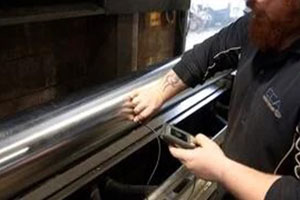
7. Wrapping
The final step sees the finished rod wrapped up in cardboard and protective plastic. Wrapping the rod securely ensures that the perfect, new chrome surface is protected when it is transported back to the repair division.
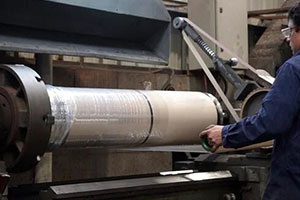
Chroming a piece of precision equipment such as a cylinder rod is a painstaking and methodical process. With a passionate team of expert technicians and engineers, CCA Hardchrome are proud to deliver the highest quality chroming product to our customers.
